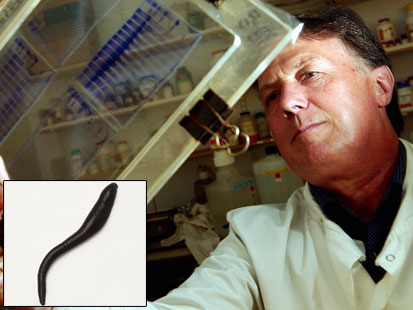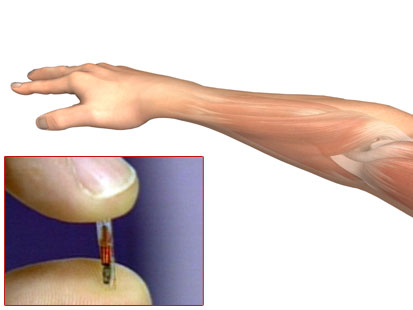Subjects Close to Their Hearts
Many medical discoveries came from doctors who performed self-experiments.
July 16, 2008— -- The notion of doctors who experiment on themselves may conjure up memories of the late Dr. Jekyll, the creation of writer Robert Louis Stevenson, who, in an attempt to distill his evil and good natures, ends up turning himself into the monstrous Mr. Hyde.
But self-experimentation has always had a place in science. Self-experimenters count among their ranks luminaries like Isaac Newton and Nobel Prize winner Barry Marshall. Whether done for convenience or for the sake of convincing others to participate in their trials for new treatments, self-experimentation has been both a successful tactic and a fatal error in judgment.
There is no complete index of who has used themselves as parts of their experiments, so it's difficult to give it a batting average, but self-experimentation has had some excellent yields, such as cures for illnesses, like yellow fever and peptic ulcers, as well as the artificial sweetener Splenda.
These doctors and innovators went beyond the norm and literally put themselves into their work -- and produced results.
David Pritchard
While conducting research in Papua, New Guinea in the 1980s, David Pritchard noted a lower rate of auto-immune diseases, like hay fever and asthma, among people infected with the parasitic hookworm, Necator americanus.

In 2004, the immunologist and biologist from the University of Nottingham applied a wrap to his arm that contained numerous hookworm larvae, as reported in the New York Times at the beginning of this month.
Using his self-experiment to gain approval from the ethics committee of Britain's National Health Services, Pritchard now hopes to find patients willing to be infected in order to see if it will help eliminate their asthma and allergies.
Scott Silverman
Because of privacy and safety concerns, VeriChip and its CEO, Scott Silverman, have faced some protests about their technology. Their RFID tags, which are implanted in the arm, can be used to help access a person's health records in an emergency.

But, while the process of implanting one of the small chips has only been FDA-approved since 2004, Silverman has had one in his own upper right arm since May 2002. He designed the chip so it would act as a barcode of sorts; a signal from the chip opens automatic doors in his office and allows him access to his computer.
It enables him to be recognized by technology in his office -- serving as a sort of key.
Silverman explained to ABC News last year that he felt it was a good way to demonstrate both the ease of the product and the way that it functions.
Barry Marshall
Up to the early 1980s, most physicians assumed that stomach ulcers were caused by stress. But Dr. Barry Marshall was convinced from his research that they were, in fact, caused by bacteria. His theory was met with skepticism by researchers who questioned how bacteria could survive in the strongly acidic stomach.

In 1984, frustrated with his inability to display a strong animal model, Marshall came to the decision to use himself. He drank a solution containing Helicobacter pylori, giving himself stomach ulcers. He was ultimately able to treat his ulcers and show their bacterial origins.
Marshall, along with his collaborator, Robin Warren, was awarded the Nobel Prize in Physiology or Medicine in 2005.
Leslie Hough and Shashikant Phadnis
In 1975, Leslie Hough and Shashikant Phadnis attempted to create an insecticide by mixing the toxic chemical sulfuryl chloride with sugar. Hough asked Phadnis to test the resulting powder, but Phadnis misheard him, and tasted it. It was overwhelmingly sweet.

For the next year, the two researchers worked with a British sugar company to develop their sweetener, finally settling on a molecule now called sucralose. It is sold in grocery stores in the U.S. as Splenda.
Judith Rapoport
This doctor did not use herself as a subject, but she did use some people with very similar DNA.
In the early 1970s, Rapoport researched the use of methylphenidate, better known as Ritalin, to treat hyperactive children. The drug had been known since at least the 1950s, when it was tested for a variety of neurological conditions.

But in order to test the drug in healthy controls, Rapoport used her own sons, and, with consent, the children of other members of her staff.
"All the children's parents were doctors, lawyers, and in one case, the president of the Washington ACLU, locally," she recalled in an interview with David Healy for his book, "The Psychopharmacologists III."
Rapoport has served as chief of the child psychiatry branch of the National Institutes of Mental Health since 1984.
Albert Hofmann
Swiss chemist Albert Hofmann received his PhD In 1929, at the age of 23. He went on to work at Sandoz Pharmaceuticals in Basel, trying to develop a stimulant to aid respiration and circulation.
In 1938, he created the compound lysergic acid diethylamide, better known as LSD.

Hofmann first ingested LSD in April 1943, and repeated his experiment hundreds of times throughout his life. Hofmann chronicled the experience in his 1979 book "My Problem Child," saying that his use of the powerful hallucinogen brought him closer to nature.
He passed away on April 29, 2008, at the age of 102.
Werner Forssman
Nowadays, catheters are inserted through veins to assist the passage of fluids in the body and to help diagnose heart trouble. But when Werner Forssman, then a medical researcher in Austria, proposed the idea in 1929, it was considered dangerous, and he was dissuaded from trying it.

Instead, Forssman became the first person to implant and to receive a catheter, as he put the tubing through a vein in his arm and into his heart. He then proceeded to the hospital's x-ray machine to prove he had done it.
Jesse Lazear
A Baltimore native and graduate of Johns Hopkins University and the Columbia University College of Physicians and Surgeon, Dr. Jesse Lazear was a member of the medical team sent under the guidance of Dr. Walter Reed to Cuba in the summer of 1900 to determine the cause of yellow fever that was breaking out in villages on the island.
At the time, doctors did not know what caused the disease to spread. Theories at the time ranged from infectious bacteria to contaminated mosquitoes.

The four doctors on the team, Reed, Lazear, James Carroll, and Aristides Agramonte, felt they would be unable to have soldiers agree to be infected to determine the method of yellow fever transmission. So, they agreed to each be bitten by a mosquito that had bitten someone with the illness.
Reed promptly returned to Washington for reasons that still remain unclear, but Carroll and Lazear went through with the experiment and were infected (Agramonte was considered immune, having grown up in Cuba). While Carroll survived his bout with the illness, Lazear passed away from yellow fever within two weeks of his bite.
Years later, Dr. Max Theiler developed a vaccine for yellow fever, for which he received a Nobel Prize. He and his collaborators received the first injections.
John Hunter
Born in Scotland in the early 18th century, John Hunter left to go to London and ultimately became the royal surgeon for King George III.
Hunter favored experimentation over book study, and is known for a number of unorthodox experiments throughout his career. While he made significant advances in the study of anatomy, he did so by obtaining bodies from professional grave robbers, known as resurrection men.

He supposedly injected himself in his penis with the pus from a patient suffering from gonorrhea, in order to prove it was a separate illness from syphilis -- unfortunately, the patient had syphilis as well. Hunter contracted both diseases and lived with them for the remainder of his life.
Or so some believe.
While Hunter claimed to have done the experiment on himself, there has been some doubt surrounding the claim, an issue examined by Dr. Lawrence K. Altman in his book "Who Goes First?: The Story of Self-Experimentation in Medicine." Some believe Hunter performed the experiment on an uninfected patient, instead.
Isaac Newton
Anatomy was among Isaac Newton's many interests, and when he decided to learn more about the structure of the eye in 1665 and 1666, he used himself as his subject.

He inserted a rod in between his eye and the bone and applied pressure, taking notes on what he saw. From his notebooks, it appears Newton saw circles of various colors, and he modified the pressure of the rod to see how those circles would change. One discovery he made in his research was that each eye has a spot that it cannot view -- a blind spot.